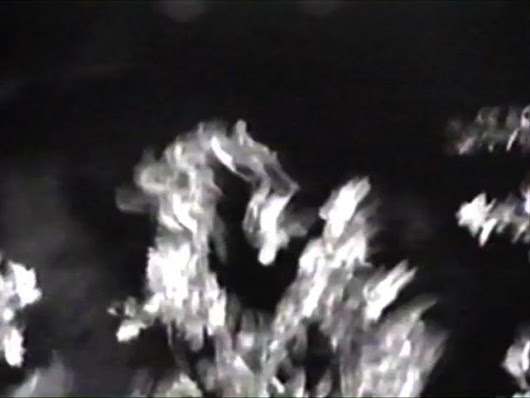 In recent months, Willie Varela has been returning his key video works, the Ambiens Series, to the public eye. Varela is best known as a lyrical filmmaker, but his video work demands equal attention. This is not only because it represents an extension of his cinematic work, with its poetic attention to landscape and compositional values. Varela should also be considered as someone who has pushed the aesthetic boundaries of the medium of analog video, exploring the unique haze and diffused light that characterize this once-new medium.
In recent months, Willie Varela has been returning his key video works, the Ambiens Series, to the public eye. Varela is best known as a lyrical filmmaker, but his video work demands equal attention. This is not only because it represents an extension of his cinematic work, with its poetic attention to landscape and compositional values. Varela should also be considered as someone who has pushed the aesthetic boundaries of the medium of analog video, exploring the unique haze and diffused light that characterize this once-new medium.
These days, when one sees the title of the Ambiens Series, one inevitably thinks of Ambien, the brand name of the sleeping pill zolpidem. This might lead one to think that Varela’s videos, so named, are bleary-eyed visions of his surroundings, glimpsed either at dusk or dawn, not yet fully formed, like the semi-conscious images that bracket sleep. This is not an unreasonable assumption – Varela’s use of analog video does give his images a pixelated sfumato that could be read as indicative of some drifted state of consciousness. But I think there is a bit more to it.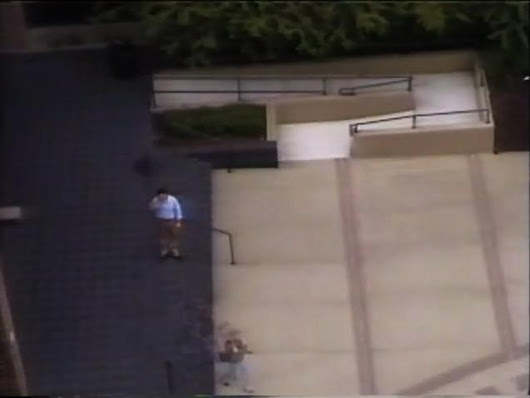 In Latin, ambiens is the present participle of ambiō, the verb which means “to go around,” “to encircle,” or “to skirt.” We could take this meaning in several ways, all of them germane to the videos themselves. First, the idea of going around or skirting might speak to Varela’s own attitude toward video as a long-time filmmaker. This is not to say that Varela thinks that video is a secondary or inferior medium. But rather, as someone who has spent decades mastering one set of tools, moving to another might feel like placing oneself on the periphery, moving along the edges of video, with some degree of trepidation.
In Latin, ambiens is the present participle of ambiō, the verb which means “to go around,” “to encircle,” or “to skirt.” We could take this meaning in several ways, all of them germane to the videos themselves. First, the idea of going around or skirting might speak to Varela’s own attitude toward video as a long-time filmmaker. This is not to say that Varela thinks that video is a secondary or inferior medium. But rather, as someone who has spent decades mastering one set of tools, moving to another might feel like placing oneself on the periphery, moving along the edges of video, with some degree of trepidation.
But it could also refer to an idea on Varela’s part – again, evident in the videos – that tape “skirts” objects whereas celluloid pins them down. That’s to say, we might think of cinema as a set of declarative statements (following Bazin, indexical “slices” from the real). Conversely, we might think of video as a set of insinuations or suggestions, magnetic impulses that, barring magnetic interference, will take the general shape of the object that the camera once scrutinized. Video encircles the object, its pixels hold its form in a moment-to-moment embrace, but they do not settle into a photograph, a fixed position.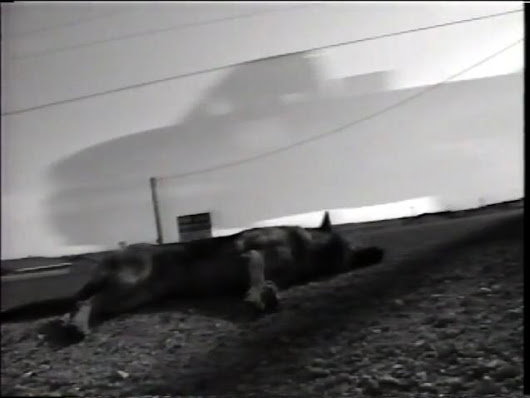 If this makes video sound somehow hopelessly inferior to film, that’s a mistake. Perhaps even more than cinema, analog video displays the flux of time, even in stillness. The video image never settles down. Even when you hit the pause button, you awaken tracking lines and sub-screen data and interference – that is, you permit the apparatus to reveal itself in this artificial stillness. The image, then, and its excess encircles the screen. Even paused time is a time of flux.
If this makes video sound somehow hopelessly inferior to film, that’s a mistake. Perhaps even more than cinema, analog video displays the flux of time, even in stillness. The video image never settles down. Even when you hit the pause button, you awaken tracking lines and sub-screen data and interference – that is, you permit the apparatus to reveal itself in this artificial stillness. The image, then, and its excess encircles the screen. Even paused time is a time of flux.
And so, what Varela’s videos show us is the process of a filmmaker grappling with this new form of time, a time that does not stop shifting and encircling the object or, for that matter, the space around the object. We can see this most clearly, perhaps, in Ambiens Series X: Landscape (2003). This work is organized around images of the body of a dead German shepherd on the side of a highway. That is, Varela is not only displaying the high velocity movement of cars and trucks surrounding death, with no cognizance of its presence. Varela also implicitly revivifies the dead dog through editing and camera movement, making it the axis around whom formal and compositional principles can be organized and displayed.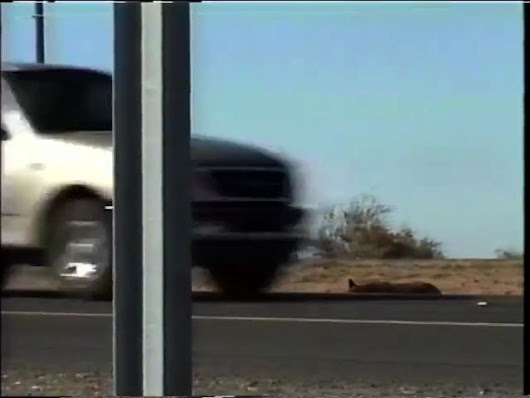 As the video opens, we see the dog as a brown lifeless lump across the street. Varela has organized the frame horizontally, but there is a striped post on the left hand side that frames the scene, as cars zoom by and we hear the concluding guitar solo to Let’s Go Crazy by Prince and the Revolution. At the low angle Varela has selected, each car that bisects the frame appears to run over the dog all over again. Then, we get the “reverse shot,” with half of the dog entering the frame from the left. Cars are a blur, and we see a sign that warns us to “Turn Back!”
As the video opens, we see the dog as a brown lifeless lump across the street. Varela has organized the frame horizontally, but there is a striped post on the left hand side that frames the scene, as cars zoom by and we hear the concluding guitar solo to Let’s Go Crazy by Prince and the Revolution. At the low angle Varela has selected, each car that bisects the frame appears to run over the dog all over again. Then, we get the “reverse shot,” with half of the dog entering the frame from the left. Cars are a blur, and we see a sign that warns us to “Turn Back!”
In the middle of the video, Varela moves to black and white, “ghosting” the scene with a kind of visual reverb. The feedback makes the edges of things quite indistinct, implying that the dog’s soul is vacating its body. In subsequent shots, Varela provides close-ups of various parts of the dog, and uses a right-to-left pan to produce an illusion of movement, much as Brakhage did in Sirius Remembered (1959), his filmic tribute to his own recently deceased canine companion. In Landscape, Varela provides an homage but also an irony. The Texas landscape is little more than a two-lane blacktop, and it kills indiscriminately.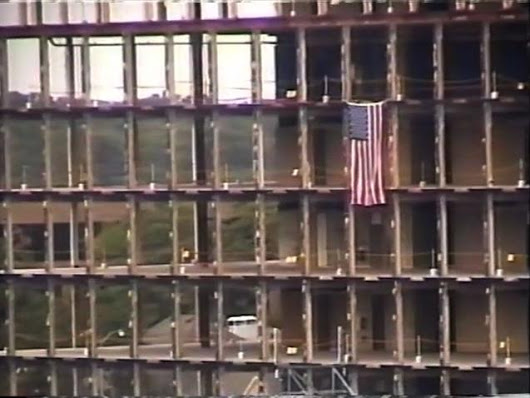 Bigger roads, bigger problems, but also the possibility of greater urban poetry on the run: this is what we find in Ambiens Series VIII: Houston (2002). A study of Houston’s notoriously aggressive freeways, this video finds Varela in a vaguely structural mood. The video opens with a low eyeline view of the highway, bisecting the frame at a perfect 90-degree angle. The road is a broad stripe down the middle, a painterly gesture accentuated by Varela’s color manipulation. He has reversed the color spectrum, so the expanse of pavement looks aquamarine, the buildings in the background black and white against a sea-foam colored sky. The composition vaguely resembles a late canvas by the painter Richard Diebenkorn. But then, Varela zooms into traffic, and we see cars go by as neon streaks, thwarting the stillness of the opening “painting.”
Bigger roads, bigger problems, but also the possibility of greater urban poetry on the run: this is what we find in Ambiens Series VIII: Houston (2002). A study of Houston’s notoriously aggressive freeways, this video finds Varela in a vaguely structural mood. The video opens with a low eyeline view of the highway, bisecting the frame at a perfect 90-degree angle. The road is a broad stripe down the middle, a painterly gesture accentuated by Varela’s color manipulation. He has reversed the color spectrum, so the expanse of pavement looks aquamarine, the buildings in the background black and white against a sea-foam colored sky. The composition vaguely resembles a late canvas by the painter Richard Diebenkorn. But then, Varela zooms into traffic, and we see cars go by as neon streaks, thwarting the stillness of the opening “painting.”
Much of Houston is organized around crisp diagonals, verticals, and horizontals. This is sometimes accomplished by Varela pivoting the camera at a Dutch angle, but more often he simply trains his sights on foreground / background relationships that generate rectilinear compositions. The early shot of highway traffic from out a window is key here, since it introduces hard-edged geometry and precision in order to disrupt it. The black bar of the window cuts the frame at one angle, while the traffic runs at the opposite angle. (This is one moment among several in Houston that calls to mind Ernie Gehr’s classic film Shift [1972].) But the cars below are just has hazy and diffuse as the iron bar is cold and exacting. It is as though Varela, in this sequence, is staging a confrontation between the firm indexicality of cinema and the soft, televisual suggestion of forms that characterizes the video medium.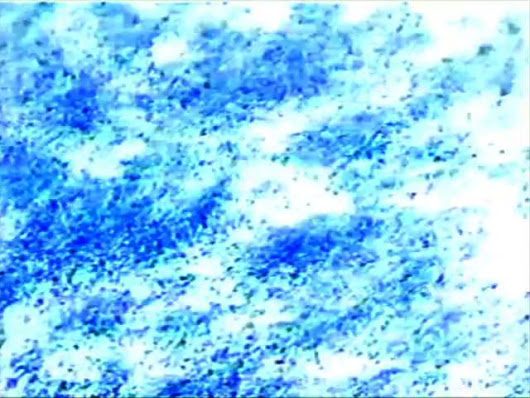 We can see Varela engaging with this “soft” medium most clearly in Ambiens Series VII: Duo (2002). It is a piece that finds Varela engaging more directly with abstraction, and in so doing he points to the flux and pliability of video as shaped by his unique sensibility. Duo begins with “snow” – the absence of an analog signal, which is then rendered in goldenrod. Then, we see a heavily processed image of running water falling from above. What characterizes the images of analog feedback is that they are doubled, mirroring themselves in reverse along a vertical axis. The “image” (an abstract visual noise) penetrates and permeates itself.
We can see Varela engaging with this “soft” medium most clearly in Ambiens Series VII: Duo (2002). It is a piece that finds Varela engaging more directly with abstraction, and in so doing he points to the flux and pliability of video as shaped by his unique sensibility. Duo begins with “snow” – the absence of an analog signal, which is then rendered in goldenrod. Then, we see a heavily processed image of running water falling from above. What characterizes the images of analog feedback is that they are doubled, mirroring themselves in reverse along a vertical axis. The “image” (an abstract visual noise) penetrates and permeates itself.
The second part of Duo applies other forms of abstraction – smearing, time-lapse, color processing – to foliage and sky. But what we can see in Duo, along with all of the Ambiens Series videos, is that Varela consistently treats this medium as a space for exploring the instability of objects in space, or perhaps more precisely, the continuity of objects and the space around them – what Maurice Merleau-Ponty called the “chiasm.” Varela’s videos possess both a tactile quality and a lack of solidity, a physical presence on the verge of evaporation. In the Ambiens videos, we observe how the distinctions between surfaces and depth, color and form, even object and non-object, can hover before us and then dissipate like a mirage.
Filmography
Ambiens Series VII: Duo (Willie Varela 2002)
Ambiens Series VIII: Houston (Willie Varela 2002)
Ambiens Series X: Landscape (Willie Varela 2003)
Shift (Ernie Gehr 1972)
Sirius Remembered (Stan Brakhage 1959)